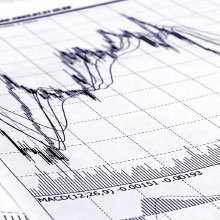Article by Investment U

Selling naked put options is easy, simple and much safer than most investors imagine if you just stick to my six tips.
Let’s say you’ve been interested in buying Microsoft stock and you feel $20 is a good price to pick up some shares. It currently trades at $23.50 per share, so you’ll need it to fall in price a bit before getting filled on the trade.
Most stock traders would just put in a “limit buy” order to buy the stock if/when Microsoft falls down to $20 per share. But there’s no guarantee that Microsoft will ever fall to $20 per share, and there’s no one paying this stock trader upfront for his time while they wait to buy Microsoft at $20…
That is, unless you’re using a put selling strategy…
As an option trader, you can take the transaction one step further by selling a Microsoft $20 put option contract – you’ll receive the going rate for that option and receive instant income.
In the past, I’ve shown Investment U readers some of the ins and outs of put options – you can read all about them, but right now I’m going to show you how to profit from a real life example of selling put options.
Selling Naked Put Options – Strike Prices and Option Chains
When selling naked put options, it can be hard to grasp how the strike prices and contract prices work together until you understand what an option price list – or option chain – looks like.
Take a look at this historical Microsoft’s option chain below:

This is a typical option chain for Microsoft options that expired in January 2010.
- The strike prices are listed in the column in black. Since we’re interested in the $20 strike price, we’ll look at the JAN10 20.00 line.
- Scan over to the “bid” column that shows how much you can receive for selling that $20 put option contract. The bid column shows $1.30 as the price. This translates into $130 you will receive for every $20 put option contract you sell because all prices are listed in per share costs. And an option contract controls 100 shares of stock.
- For a typical 1,000 share stock trade, you can sell 10 put option contracts and instantly receive $1,300 in your account, no questions asked.
This is money for you to use anyway you see fit. No matter what happens, this money is yours.
In exchange for selling those 10 put option contracts and receiving your instant $1,300, you’d be obligating yourself to buy 1,000 shares of Microsoft at a price of $20 per share until the expiration day in January 2010.
At this point, you know ahead of time that you will be obligating yourself to buy 1,000 shares of Microsoft at $20 per share, for a total investment of $20,000.
Not only do you get to collect $1,300 upfront just for placing the option trade, but you’re also giving yourself a chance to buy a stock that you want to own, at the price you want.
How great is that?
As long as you know this potential future transaction is within your financial means and trading plan, then it’s a win-win situation for you.
When Selling Options, What Happens on Options Expiration Day?
So, when selling put options or any options, people often ask, “What happens when options reach their expiration date?”
Only two things can occur at expiration – either the price of the stock is above the chosen strike price or it’s below.
- If the stock finishes above the strike price, then the trade is over and the option expires worthless. The option buyer walks away with nothing while the option seller gets to keep the upfront cash with no further obligations.
- If the stock finishes below the strike price at option expiration, the option buyer will “exercise” his right to the contract and you will be required to fulfill your end of the agreement – which means you end up having to buy a stock you wanted at the price you wanted.
Sounds pretty good to me. And all the while you still get to keep the upfront cash.
So in the case of our Microsoft example above…
- If Microsoft closed below $20 in January 2010, you’d be obligated to purchase your 1,000 shares at $20 each. With the $130 received upfront for each option contract, this essentially reduces your cost basis to $18.70 per share once the transaction is complete. Not bad.
- If Microsoft closed above $20 at January 2010 expiration, the trade is over and the option expires worthless. You keep the $1,300 and are free to repeat the process again for another expiration period. This is the key to income generation.
As I mentioned in a recent closed-door meeting to Investment U members in California, up to 90% of option contracts will expire worthless, leaving you with the upfront cash payment.
After implementing this strategy for a while, you will come to see that most of the trades will expire and you’ll keep padding your account with instant income. It’s kind of like being the casino.
Using a Put Selling Strategy – Six Tips to Selling Options
A few guidelines to keep in mind when selling naked put options:
- Only sell put options on stocks you want to own. Do not use this options trading strategy on high flyers just to receive the upfront income.
- Only sell enough contracts to stay within your comfort zone. If you normally trade in 500-share blocks, then only sell five option contracts.
- If you’re uncomfortable at any time during the trade, or do not wish to own the stock at the strike price you’ve chosen, then you can unwind the trade at any point. All you have to do is buy back the put options you’ve sold.
- The option price will fluctuate during the course of the trade. It may get cheaper or more expensive while you hold it. The bottom line is – you’ll either get to buy the stock at expiration or the option will expire with no value.
- You will need to have an approved “option trading account” with your broker. This needs to be set up before making these transactions.
- You’ll always know ahead of time what your potential total outlay will be if obligated to buy the shares. No surprise endings.
That’s all there is to selling put options. It’s easy, simple and much safer than most investors imagine if you just stick to my six tips above.
Good Investing,
Lee Lowell
Article by Investment U





